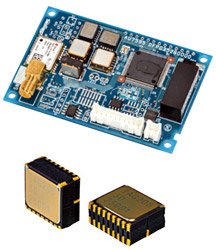
Posted to News on 23rd Mar 2017, 16:08
Tamagawa Seiki Tri-Axis inertial measurement units: applications
Tamagawa's range of tri-axis inertial measurement sensors are widely used in the car and vehicle applications from driver monitoring to fully autonomous vehicles, here Jon Bentley of Mclennan - Tamagawa's UK distributor for industrial applications - explores some other interesting uses that this technology is being be applied to.

As a well proven six degree of freedom sensor for vehicle motion measurement, Tamagawa's Tri-Axis series of inertial measurement units (IMUs) are available in various packaging and feature styles that include low-cost pitch, yaw and roll measurement sensors which might be used from fleet driver evaluation to sophisticated IMUs with integral GPS that can be as part of complete dead reckoning systems for autonomous vehicles.
For single axis vibration measurement over a typical +/-60 to 720 degree/sec range, Tamagawa's MEMS gyro sensors provide linearity to 0.2 per cent F.S. More sophisticated products that combine MEMS sensors include the AU7554 series IMU 's for measurement of attitude/3 dimensional motion for vehicles and mobile machines. Available as a low-cost PCB or as a housed IMU (TAG250 series), it is equipped with vehicular standard MEMS gyro sensors and features outputs for tri-axial angular velocity, acceleration, and angles and is supported by stable thermal behaviour and reproducibility. With I/O interfacing for CAN, RS232C, and USB it incorporates digital input command to be composite with external information such as vehicle speed.
The TAG250 can be equipped with extended functions including a Bluetooth communication board, a GPS receiver board and a battery pack. The unit is supplied with data logging software. Other versions include a completely packaged IMU in waterproof and dustproof case as well as software, evaluation units and a full complement of accessories.
As IMUs include both gyro and accelerometer sensors they can provide certain advantages and may be used effectively for industrial and other application areas where complete orientation feedback and movement can be used to enhance performance, improve productivity, increase safety and even aid recovery in medical rehabilitation. The following is just a brief overview of some potential uses.
Robot arm control
In this example an IMU is used to detect the amount of deflection in terms of position and velocity for a robot end effector. This information may be used to optimise the dynamic performance of an assembly robot during set-up or in-situ by automatically adjusting some or all of the axes. As the position element is essentially in all six degrees of freedom, the precision of the adjustment is potentially higher than just relying on torque demand from servo feedback. The IMU is this case can help improve quality control and even speed throughput on the assembly line.
Positioning tool for a torque wrench
In this example the torque wrench is fitted with an IMU and set up to sense its exact position in space. The control system then adjusts the torque output for each individual location so that large machine assembly might be carried with increased safety and speed.
Detection of abnormal vibration of machine tools
In this example on a stamping machine the IMU's gyro can detect abnormal micro-vibration more effectively than individual accelerometers because the vibration of materials cut by machine tools is often accompanied by rotational motion. As abnormal vibration is often a first indication of machine failure, this could improve the availability of the machine through enhanced preventive maintenance which is a requisite of Industry 4.0.
Overhead travelling cranes
In crane safety, an IMU fitted to the crane hook can provide superior X-Y axis deflection sensing than camera systems by directly detecting angular velocity and acceleration. In other types of crane application such as marine loading cranes the IMU could be used to compensate for heave.
Measurement of inclination of construction and agricultural machinery
The IMU is capable of accurately measuring the inclination of a heavy mobile machine even under extreme vibration conditions, because the inclination is measured by both accelerometer and gyro sensors. Tamagawa has also completed applications for attitude measurement of up to 0.1 degrees for heavy construction vehicles as well as MEMS based dead reckoning systems for autonomous guiding of agricultural vehicles.
Monitoring of movement for rehabilitation
IMUs can bring several benefits to rehabilitation with precise measurement of movement available for tracking a patient's progress. With six degrees of freedom measurement available, complete data including acceleration, angular velocity and attitude angles forms a fundamental part of a rehabilitation when used with appropriate software. The benefit of wireless measurement also improves the patient 's wellbeing and experience.
Through its distribution partnerships and its own comprehensive design and build service available, Mclennan provides motion control and automation products from single components to complete mechatronic assemblies. For application support on the Tamagawa range please visit www.mclennan.co.uk.






























